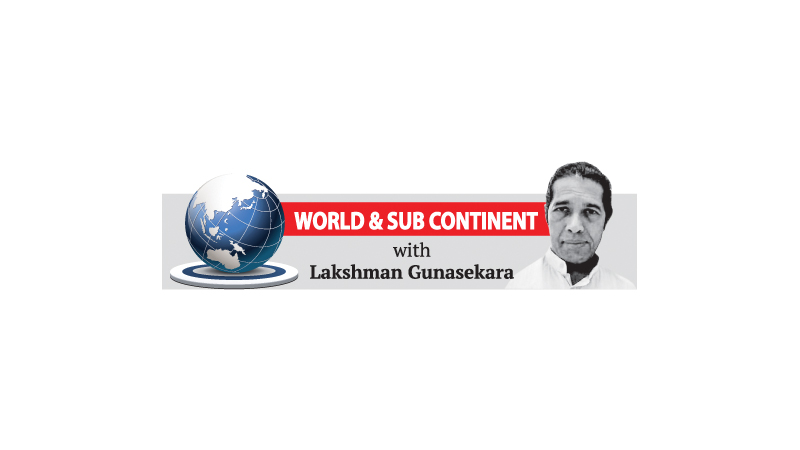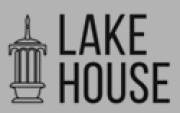Even as Russia was awarding the country’s highest civilian award to visiting Indian Prime Minister Narendra Modi, Moscow’s biggest geopolitical enemy, the North Atlantic Alliance (NATO) had begun its 75th anniversary summit in Washington, DC. Some critics of Delhi’s BJP-led NDA regime might say that ‘Namo’ as the strongman is popularly known, may have wished that he was in Washington being feted by the world’s richest, most powerful nation rather than in Russia.
But for Russia, the arrival of India’s re-elected leader soon after taking office, is a major diplomatic triumph in addition to being a most crucial rejuvenation of an enormously beneficial geopolitical alliance.
Long ago, as Narendra Modi – undoubtedly one of modern India’s influential political personas – marked his first national political successes, his adoring fans began to shorten his name to “Na-Mo”. In Hindi, ‘namo’ is the traditional, Sanskrit-derived, salutary word showing religious respect. It is used in our own national anthem in “…namo, namo, Matha…”. Those same millions of adoring Modi fans who call him ‘Namo’, themselves, do not mind being labelled as “Andh Bhaktis” (blindly loyal followers).
For Modi’s Hindu-Hindi supremacist followers, in their political narcissism, respect for India from the world’s sole superpower, the USA, is much better than from any other country. Hence, Delhi’s cultivation of the West in the recent decade at the expense of its oldest great power friend, Russia and, the Soviet Union before that.
Actually, the cultivation of the richest capitalist powers of the West predates the BJP and was initially dictated not by mere attention-seeking but, by India’s newly arising economic needs, as an emerging Capitalist power. Ever since the 1990s’ Congress-led pivot to greater market capitalism, India has keenly sought foreign investment capital, lucrative markets and, also most advanced technology for both industrial and military purposes.
There is also evidence that bribery, with lucrative dollars and hidden accounts and holdings in the West, also played a role in purchases of more expensive Western military hardware like the Bofors heavy artillery and Rafael fighter jets. The West cultivated Delhi.
Triumphant as it was, over its Cold War victory, the Western power bloc was not immediately sensitive to the geopolitical potentials of China. But that was at least fifteen years ago. In the past several years, the China’s rapidly extending military-diplomatic outreach pushed both Delhi and the West closer.
Unfortunately, Delhi made other geopolitical errors like solidly backing the Western intervention in Afghanistan against the entire range of Islamic nationalist movements there, including the secular Northern Alliance of Afghan resistance. At the time, South Block (the offices of India’s MEA) seemed to be mechanically following the classical Kautilyan dictum of befriending the power in the rear of one’s neighbouring ‘rival’ power.
For Delhi, the Taliban was too much of an ally of Pakistan’s own Pashtun tribes. The sundry other Afghan militia were all too temptingly “Islamic terrorist” to not exploit in the demonisation of India’s Muslim citizens.
Blind to external dynamics in its domestic ‘cultural nationalist’ fervour, the BJP regime was also blind to Pakistan’s sustained, very astute balancing of its old military links with the West with that of the now equally beneficial ties with China. Pakistan-controlled Kashmir provides China with a land border with Pakistan that enables direct communications logistics.
Today, in addition to the modern commercial and naval port developed by China on its Arabian Sea coast and China–Pakistan Economic Corridor, a road and rail route linking that port with mainland China 3,000 km away, Pakistan also now actually hosts a brand new, Chinese-design aircraft assembly plant. The Pakistan Aeronautical Complex (PAC) at Kamra Kalan, near Minhaas airbase in northern Pakistan, churns out the joint Sino-Pak JF-17 ‘Thunder’ and JF-17B multirole fighter jets that are replacing Pakistan’s aging US-built F-16 fighters.
This hardware is way cheaper than West-made products and has rudely reminded India of its own, topline Russian Sukhoi jets that are far cheaper than the ridiculously expensive American and French hardware that Delhi has been recently considering.
A more rude eye-opener for Delhi has been Washington’s persistent exclusion of India from some of its major military pacts with other powers in what the US calls its ‘Indo-Pacific’ theatre.
AUKUS
While India was proud to be part of the US-initiated ‘Quadrilateral Security Dialogue’ (QUAD) between the US, Australia, India, and Japan, that is merely a ‘consultative forum’. When the US later formed a specific defence cooperation pact for the Indian Ocean region, the AUKUS (Australia-UK-US), Delhi was left out.
Delhi later understood why: the West, aware of India’s legacy of military ties with Russia and its continued ‘Non-Aligned’ posture between Russia and the West, simply could not rope Delhi into an actual military alliance. At the same time, Delhi is also aware that while the US-NATO bloc is currently world dominant, China is the emerging superpower especially in economic terms.
Also, after a half-century of rampant NATO militarism far and wide, Delhi knows it simply cannot put all its eggs in the one basket. Especially given that this (Western) basket harbours the same old Euro-colonial intentions that once cruelly subjugated much of the non-European world for nearly half a millennium. .
India, like much of the Global South, is regularly battered by the veritable cyclones of blanket international economic and political sanctionsimposed by the West on those States and entities that the West decides are ‘enemies’. The perceptions and interests of the rest of the world are not factored in.
Just like Sri Lanka, India is threatened by the global energy supply insecurities due to constant Western warlike interventions in West Asia and northern Africa. Likewise, food insecurity due to the Ukraine crisis and the safety of its migrant labour due to the West Asian wars.
This is why much of the Global South nations are now forming their own economic alliances quite independent of the Western-controlled segments of global capitalism. With China as the world’s biggest producer and a major centre of finance capital, many other resource-rich middle-income states that have become regional powers, like Brazil, Nigeria, India, South Africa and Iran, are linking up in alternate economic networks.
This is why Delhi has not hesitated to join the Shanghai Co-operation Organisation and the BRICS (Brazil, Russia, India, China, South Africa), both of which are initiated by China and have, at their core, China’s militarily insured immense economic power. Delhi has long been aware of the practical value of ‘de-dollarisation’ – that is, moving away from a US dollar-centric world trading and financial system.
The ability of some smaller powers to circumvent West-imposed economic sanctions against selected ‘enemies’ of the West by resorting to national currency-based trade exchanges is pointing the way toward the end of American dollar supremacy. The world is currently watching the inexorable impoverishment of Argentina after its new hard right-wing Government imposed radical neo-liberal policies including allowing the US dollar to dominate its currency markets.
India (as do many, if not most, Indian Ocean Rim states) does not see the Ocean named after it as being merely a subordinate part of a larger ‘Indo-Pacific’ theatre of great power rivalry between the US, its Asian allies and China. Immersing itself in, and benefitting from, Global South economic currents, Delhi seeks to benefit from the parallel new economic power of emerging Third World states, including China’s.
Delhi is certainly worried about a rising China but also faces the reality that China recently overtook the United States to become India’s premier trading partner. Equally geopolitically significant is China’s innovation in exploiting the Eurasian land corridors between East Asia, West Asia, Africa and Europe.
That is Beijing’s billion-dollar Belt & Road Initiative (BRI). Washington is just realising its isolation from the giant, geographically unified, super-continent of Afro-Eurasia.
The BJP-NDA Government now seems to be doing a repair job on India’s lagging friendship with Russia. After some years of looking mostly Westwards, it seems like the BJP has woken up to geopolitical reality.
Another most significant reality is the heightened intimacy between Moscow and Beijing due to the Ukraine crisis. Modi’s Moscow visit remarkably coincides with NATO’s 75th anniversary summit hosted in Washington last week.
With US elections in the offing, while the NATO leaders were officially focusing on the Ukraine crisis (and the pretence of “Irreversible” support for Kyiv), the second most important, if publicly unmentioned, topic was that of the future of NATO itself. It was Donald Trump, who, as early as in his first election campaign in 2016 began to question America’s commitment to the Atlantic pact.
NATO reform
As the European and North American leaders converged on Washington, Trump’s American political colleagues, especially of the Republican Party, were quietly echoing that same message to their European colonial cousins. Indeed, analysts are already seeing this global geopolitical shift in black and white in the text of what seems to be the future Trumpian blueprint for a new regime: the ‘Project 2025’ document.
This new ultra-Conservative (it proposes closing down of America’s education ministry) action plan reportedly pushes for America to lead in a drastic re-orientation of the North Atlantic alliance.
Scripted mainly by several Trump aides at the rightwing Heritage Foundation, Project 2025 envisages a shift from an anti-Russian posture to one that projects Western power globally to meet what American ‘neo-cons’ see as the new superpower challenge of China.
Thus, South Asia’s currently leading persona, finds himself in a bear-hug (US commentators did note Putin gave Modi a hug) at the intersection of new global tectonic power play. The BJP and its leader will certainly need to get out of their Hindutva intellectual chamber to survive the coming storms even a Hindu-sceptic Kautilya will find it difficult to ride.
These columns will soon discuss the global geopolitical ramifications of the forthcoming US Presidential Elections. Meanwhile, following France’s snap assembly elections last week and their somewhat confused outcome, Europe anxiously awaits a political re-arrangement that will stabilise Government and social management in its second largest nation.








